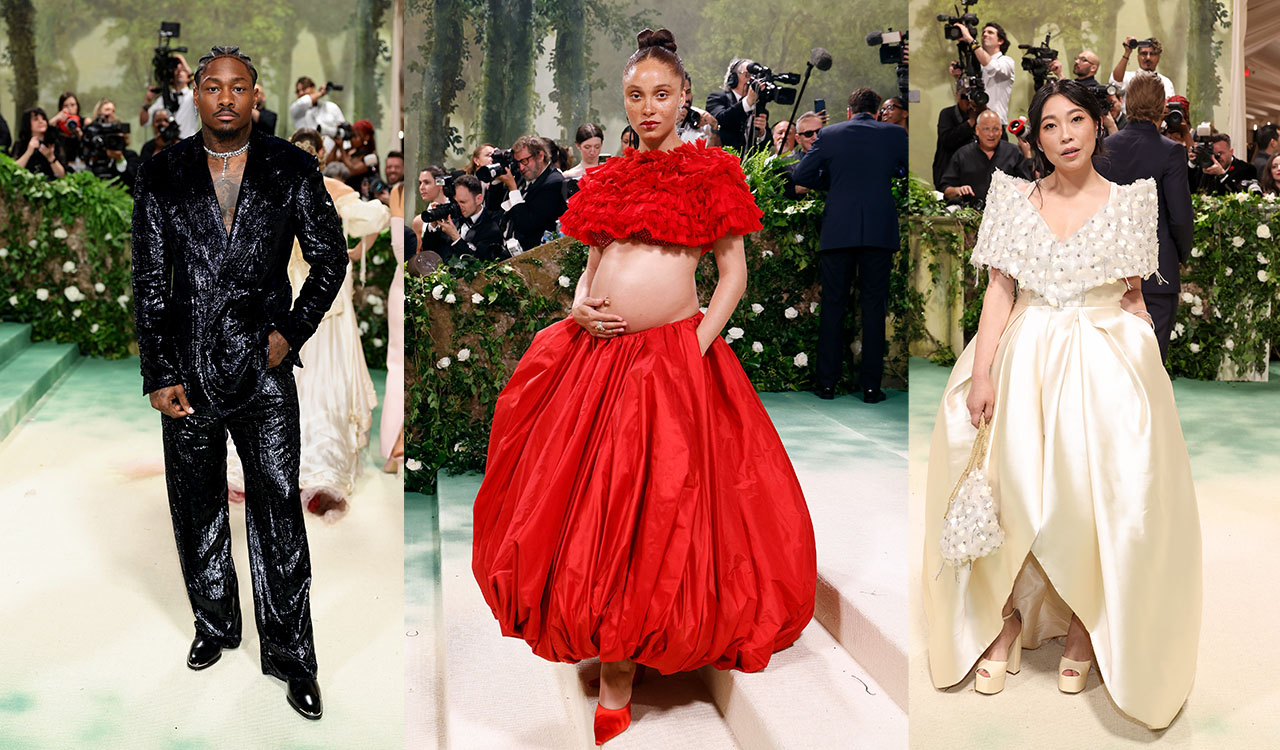Levi’s brand resurrection is undeniable. While Levi Strauss recently announced that they’re cutting 10 to 15 percent of their existing workforce, they’re simultaneously expanding their denim footprint into “nascent markets.” Levi’s fell slightly short of Wall Street sales projections for 2024, but its stock is still growing. Levi’s growing stock is evidence of a solid growth strategy and the brand’s ability to win stakeholders’ confidence when the market is in flux.
Levi’s understands the unique preferences of the Gen Z purchasing mentality––customization, sustainability, ethical product components, social media collaborations––and is willing to be the first to act on them. Most Levi’s jeans are made with 100 percent cotton or a cotton/linen blend. This focus on product components is in keeping with next gens’ frugal and quality-focused purchasing mentality.
Levi’s is still expanding its operation while many legacy brands and retailers drastically contract. The great minds behind Levi Strauss aren’t afraid to make big moves to keep up with the times. Most notably, by offering a targeted range of products with varying levels of durability, developing different markets, and touching on a wide range of trends.
Let’s look at the moves that made the denim stalwart one of the strongest brand resurrection stories of the post-Covid era.
A Brief History
Levi Strauss & Co.
Levi Strauss, Wrangler, and Lee are often called “The Big Three” of denim, as the brands shaped the denim industry as we know it today. But Levi’s was the first of the three and many would argue it remains the most innovative. The brand’s founder and namesake, Levi Strauss, bought an overalls patent that was revised into denim the styles we recognize today back in 1873. Levi Strauss homed in on the miner market during the California Gold Rush of the late 1800s. As the Gold Rush dissipated, Strauss focused on workwear, and we began the see the early iterations of denim staples that are so romanticized by Gen Z and millennials today.
Blue Bell’s Wrangler
Want to hear a little-known fact about Blue Bell’s Wrangler? Blue Bell Overall Co. was founded to serve the cattle and ranching industry in the early 1900s––it’s not surprising that the brand isn’t talking about this today, with nearly a quarter of Gen Z gravitating toward cruelty-free meal options. Blue Bell acquired Wrangler’s parent company in 1943 to create denim specifically designed for ranchers’ workwear needs. Although it was once considered “denim for the working cowboy,” its ethos has evolved to highlight its history, ethical trading partners, and timeless design.
D. Lee Mercantile
Levi Strauss & Co. built its business on miner wear and H.D. Lee Mercantile has a somewhat similar origin story. Henry David Lee was a canned goods and kerosene merchant who began selling workwear from other manufacturers. Lee didn’t target Gold Rush miners with its famous Lee Union-All coverall launched in 1913. In keeping with the old adage of “sell what you know,” Lee’s unique strategy started out targeting farmers; however, the union references and utilitarian nature of the product quickly made it a hit with factory workers. Lee was also the first to produce a zip-up denim fly in 1925, the likes of which are still worn in most denim styles.
Levi’s Does Trend Awareness Better
The difference between Levi’s and its Big Three counterparts is in Levi’s ability to adapt before the trend curve. Yes, Levi’s was founded first, but that’s just the beginning. While Levi’s is a huge brand, it stands out in its ability to cut through red tape quickly enough to be a first responder to fashion trends.
Levi’s was one of the first brands to pinpoint the shift from skinny jeans to looser, early 2000s-inspired staples. And Levi’s is vocal with those fashion predictions, keeping consumers looped into how it sources trends––for instance, in predicting that XXL silhouettes would be huge in 2024, it launched a Loose Fit collection for men and women.
But Levi’s market awareness doesn’t stop with fashion trends. The brand understands the unique preferences of the Gen Z purchasing mentality––customization, sustainability, ethical product components, social media collaborations––and is willing to be the first to act on them. Most Levi’s jeans are made with 100 percent cotton or a cotton/linen blend. This focus on product components is in keeping with next gens’ frugal and quality-focused purchasing mentality. While I’ve yet to find a study on Gen Z reading and weighing product components more than other generations, they’re vocal about their disdain for millennials’ affinity for new, or fast fashion, clothing. On that point, Levi’s SecondHand caters to thrifters with vintage classics. And in validation of the brand, a pair of Levi’s from 1890 sold in an auction for $87,000 in 2022.
Levi’s Targets “Nascent Markets”
It’s not like Levi’s is immune to recent market fluctuations. As with many legacy brands, Levi’s leadership has had to make some difficult decisions to keep investors happy. Mass layoffs are one of the fastest ways for a good brand to get bad press, and Levi’s is reducing its workforce by 10 to 15 percent to prepare for Wall Street’s reduced market forecast for 2024.
In 2022, Levi Strauss expanded with over 100 stores across Asia. At NRF, Levi’s CEO, Michelle Gass, shared that the company will continue targeting underserved denim markets in years to come. Levi’s is straight up laying off American workers and hiring overseas, but we aren’t seeing memes demonizing Levi’s on social media. The reason there hasn’t been a significant backlash. The brand is radically transparent about it restructuring. When there’s no greenwashing or false Diversity & Inclusion initiatives, there isn’t much to call out on social media.
In the past decade, Levi Strauss has orchestrated a remarkable brand resurrection. Despite slightly missing Wall Street sales projections for 2024, Levi’s stock continues to climb. Unlike the legacy brands that are retreating in the face of market challenges, Levi’s remains steadfast in its expansion efforts. Looking ahead, Levi’s is poised for a “DTC-first future,” shifting its strategy to focus on direct-to-consumer channels without middlemen to give consumers more power than ever over their denim purchasing experience.




